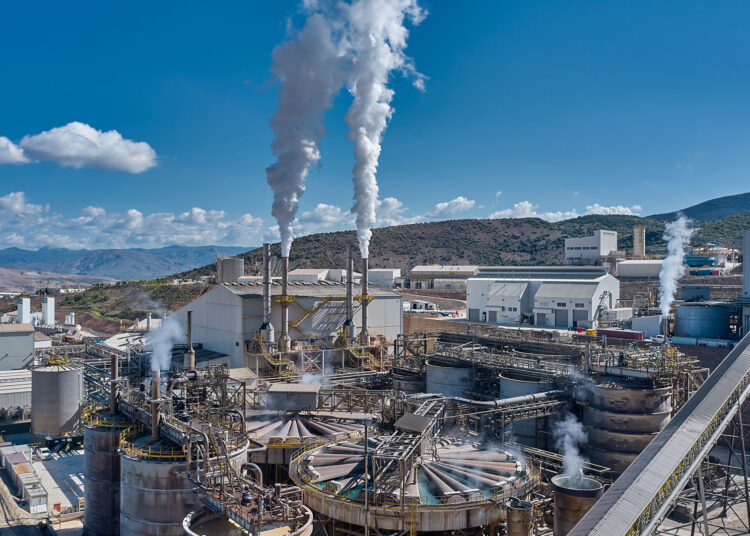Abdullah Bozkurt/Stockholm
A deadly gold mine accident in Turkey exposed how a state captured by greedy corporate power, a political Islamist class bound by loyalty and ideology with utter disregard for public safety and health, and a US-based global company that rewards complicity over caution and operates under political cronyism together produced a major manmade disaster that experts had long warned was forthcoming.
What began as a “natural accident,” according to official statements, has since deteriorated into a multilayered story of political protection, corporate deception and institutional collapse — one that now stretches from the Turkish Parliament to a US federal courtroom. As the US court weighs the liability of SSR Mining, the tragedy that unfolded above the Euphrates River remains a parable of modern Turkey’s political economy: When profit becomes policy, oversight becomes theater and disaster becomes destiny.
On February 13, 2024, the Çöpler gold mine in Erzincan’s İliç district — operated by Anagold Madencilik A.Ş., a joint venture between SSR Mining Inc. of the United States and Lidya Madencilik, a subsidiary of Turkish President Recep Tayyip Erdogan-linked Çalık Holding — collapsed in one of the worst environmental catastrophes in modern Turkish history.
A towering heap-leach pad, saturated with cyanide and piled hundreds of meters high above the Sabırlı Valley, gave way, burying nine miners alive beneath millions of tons of toxic sludge. Search and recovery operations dragged on for months. The body of the final miner was recovered 116 days later, in June 2024.
What unfolded that day was not a freak geological accident but the culmination of years of political indulgence, ignored warnings and deliberate corporate deceit.
The class action complaint filed against SSR Mining centers on the gold mine disaster in Turkey, which critics have described as a manmade tragedy:
The Çöpler mine is at the heart of President Erdogan’s so-called national policy for “independent” energy and mining development, a program officially framed as a path to economic growth but, in reality, designed to enrich the president’s political and business allies. Under this model, Anatolia’s mountains have been transformed into vast open pits of gold, coal and copper, often at catastrophic cost to the environment, nearby communities and workers’ lives.
At the political core of this model sits Çalık Holding, founded by Ahmet Çalık, a loyal ally of Erdogan whose former CEO, Berat Albayrak — Erdogan’s son-in-law — served as both energy minister between 2015 and 2018 and finance minister from 2018 to 2021. Under Albayrak’s tenure, Çalık Holding’s mining arm, Lidya Madencilik, emerged as a dominant domestic partner for foreign investors seeking protection and access in Turkey’s politicized economy.
Its flagship venture was the Çöpler mine, a symbol of Ankara’s promise to transform Turkey into a gold powerhouse. The company also has shares in other gold ventures, including Kartaltepe Madencilik, operating under the same partnership model with SSR Mining. Its license is valid until November 2026 and covers deposits of gold, silver, copper and manganese. It has thrived under weak regulatory enforcement and opaque government oversight
SSR Mining brought capital and international legitimacy; Çalık provided local cover and political access. Together, they built not only a mine, but a system, one where corporate negligence thrived under political immunity and where profit flowed upward while responsibility vanished into bureaucracy. The company enjoyed reductions in taxes and fines imposed by government authorities, indicating further evidence of political favoritism.
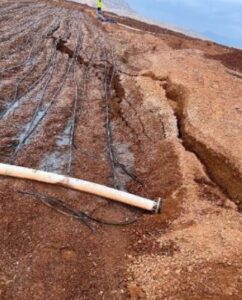
Anagold had received its first license from the energy ministry in 2007 and an Environmental Impact Assessment (EIA) approval in 2008. The company began production in 2010 after obtaining an operating license from the Erzincan provincial administration. Some 2,700 workers, including subcontractors, were employed at the site at the time of the disaster, with the mine’s operations covering more than 1,700 hectares of land.
Long before the heap collapsed, scientists, engineers and workers had raised alarms. Internal monitoring data showed that the leach pad, an artificial mountain of ore steeped in cyanide, was shifting 25 millimeters per day by January 2024, a clear red flag for structural failure. Cracks appeared on the surface. Workers photographed them and circulated warnings on WhatsApp. Anagold’s occupational safety officers admitted they had “known about the crack for two days,” yet production continued.
The heap was already overloaded by 10 million tons beyond its approved capacity, a violation of the 2021 EIA license, yet no action was taken. The reasons were simple: Shutting down the mine would have cost millions in lost output and triggered questions about why Turkey’s most politically protected gold operation had become unstable. So management stayed silent and the government looked away.
In the Turkish Parliament opposition lawmakers argued that inspectors had long deferred to corporate interests and approved expansion plans without independent verification. It emerged during questioning that the company itself operated key environmental monitoring systems, allowing Anagold to control much of the data used in official reports.
According to an official government document, Environment Minister Murat Kurum personally signed off on the Environmental Impact Assessment (EIA) for the İliç Gold Mine on June 10, 2021, a decision that later sparked criticism amid questions about regulatory oversight and political influence:
Anagold’s operating license had been renewed and expanded multiple times — in 2008, 2010, 2014, 2017 and again in 2021 — with each approval signed off by successive government ministers. These expansions, opposition deputies argued, allowed the company to dramatically increase production and cyanide use without corresponding investments in safety measures. Critics described this as a textbook case of regulatory capture, a system in which political loyalty, not public safety, defines industrial oversight.
Anagold delegated most operational work to subcontractors such as Çiftay İnşaat, Kar-Sa Engineering and Asil Çöplerliler Turizm, while retaining control of the gold extraction and cyanide processing. Çiftay, a company long involved in state contracts and major infrastructure projects, handled drilling, blasting and ore transportation, activities directly tied to the heap’s overloading. Despite this, government labor inspectors admitted that their purview stopped at “occupational safety and hygiene,” with no authority over the cyanide leaching process itself.
A December 2023 inspection had documented six separate regulatory violations by Anagold, followed by another violation report in January 2024, just weeks before the disaster. Still, no emergency suspension or safety audit was ordered. Officials further disclosed that engineering consultancy work for the heap leach system had been performed by GRE, a foreign contractor. Anagold had been fined 2.5 million lira in total, roughly 20 percent of all national mining fines issued in two years, yet the penalties had no practical effect.
Turkish officials at the parliamentary hearing admitted that no centralized data existed to track how much ore was being added to the heap leach pad, despite the risk that overloading directly contributed to the February collapse. Turkish subcontractor Çiftay handled ore shipments, yet the weight of shipments and their frequency were not monitored.
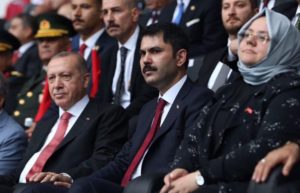
Professor Candan Gökçeoğlu, a geotechnical expert from Hacettepe University, testified at a parliamentary hearing on May 28, 2024, confirming that the heap leach pile, containing roughly 60 million tons of material, collapsed due to a combination of design flaws, improper site geometry and ignored risk data. He described the failure as “catastrophic,” noting that the heap’s 96-meter height, built on a narrowing ridge above the Sabırlı Stream and a manganese pit, created a structurally unstable formation. “From November onwards, the site was signaling instability,” he said, citing radar data that showed escalating subsurface movements months before the February 13 disaster.
The professor’s timeline revealed that warning signs had been visible since late 2023 but were either dismissed or overlooked by the company’s engineers as well as regulators. He explained that increasing pore water pressure, improper drainage and overloading beyond licensed capacity were critical factors leading to the failure.
Gökçeoğlu characterized the disaster as a product of a design built for collapse.” He emphasized that the company failed to implement back-analysis studies after a 400-cubic-meter landslide in March 2022, which should have prompted structural reassessment. Instead, heap construction continued vertically without reducing load or revising safety factors. “Had those early warnings been examined,” he said, “the catastrophe could have been prevented.”
Anagold executives for the first time appeared at a parliamentary hearing on June 4, 2024, to defend themselves, describing the collapse as a “natural geotechnical failure” caused by “unexpected ground movement.” They confirmed that the company did not halt production after multiple radar alarms in early 2024, claiming that the warnings were “not interpreted as serious.” Executives avoided confirming whether SSR Mining or Çalık Holding’s Lidya Madencilik had intervened in operational decisions, citing “confidentiality.”
The evasiveness of Anagold’s executives further strengthened the perception that political and economic power shields mining conglomerates from accountability. One opposition lawmaker remarked at the close of the hearing, “What we see here is not a collapse of soil — it is a collapse of governance.”
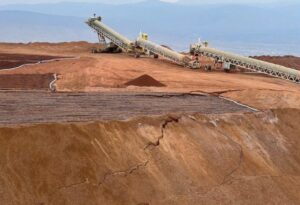
In a hearing held on June 26, 2024, Turkish union representatives laid bare the problems of labor safety in the mining field. Ertuğrul Ensar Bayrak, senior adviser to the Turkish Mine Workers’ Union (Maden-İş), identified basic engineering errors, including overloading, poor slope geometry and construction of high-risk leach pads directly above the processing plant and open pit.
Yıldırım Beyazıt Çetin, Maden-İş branch president for Erzincan, disclosed that while close to 3,000 people worked at the mine, only about 250 were unionized under Anagold and that most labor was handled by subcontractors such as Çiftay İnşaat. He said Maden-İş had tried to organize Çiftay’s workforce for more than a decade, but court cases over union recognition dragged on for 11 years, effectively denying workers collective bargaining rights.
“We fight to organize, but political and corporate power blocks the process,” Çetin told the committee. He described a system where subcontractors are used to fragment labor, suppress unions and externalize risk. “When accidents happen, the main company says, ‘They’re not our workers.’ When it’s time for profit, they all belong to the same system,” he said.
He added that workers had repeatedly expressed safety concerns, but Anagold and subcontractor management dismissed them. “Our people warned that the ground was shifting, but no one wanted production to stop,” he said.
Minister Kurum, who personally approved Anagold Madencilik’s doubling of production at the gold mine, never appeared at the parliamentary hearing despite motions filed multiple times by an opposition lawmaker. In the ongoing judicial case, the court-appointed experts (bilirkişiler) found the officials including Kurum, who authorized the expansion, primarily at fault in triggering the conditions that led to the collapse. Yet, Kurum was shielded from any accountability by President Erdogan, and he was in fact rewarded by reappointment as minister of environment.
Opposition lawmaker Deniz Yavuzyılmaz alleged that Kurum was being shielded from justice and from parliament, accusing the ruling party of blocking his testimony to prevent public scrutiny. “The man whose signature paved the way to this tragedy is now back in charge of the same ministry,” Yavuzyılmaz said. “He is being protected both from the courts and from this committee.”
During his testimony before the parliamentary committee on July 9, 2024, Turkish Union of Engineers and Architects Chambers (TMMOB) Secretary-General Dersim Gül declared that the İliç mine collapse was not an accident but the inevitable outcome of political decisions, deregulation and the suppression of scientific oversight. He explained that TMMOB had repeatedly warned of soil instability, cyanide leaks and structural risk at Anagold Madencilik’s site long before the February 2024 disaster that killed nine miners.
Government records show that on May 20, 2020, Turkish authorities approved Phase 4B capacity expansion projects for Anagold Madencilik, allowing the company to further enlarge its mining operations despite growing environmental and safety concerns:
Despite the chamber’s official status and ongoing lawsuits, its experts were barred from entering the site after the collapse, and their requests for environmental data were ignored or deflected by the Ministry of Environment, which relied almost entirely on company-supplied reports. Gül said TMMOB had twice demanded the mine’s permanent closure due to its proximity to the Euphrates River basin, warning that it posed serious risks to downstream communities and even neighboring countries.
Gül further outlined a series of ignored warnings and official complacency: a sulfuric acid tanker crash in İliç, a cyanide spill in June 2022 that was initially denied and a minor landslip in March 2022 — all precursors to the fatal collapse. Despite repeated lawsuits and public outcry, no independent inspection ever took place. Instead, the environment ministry imposed a token fine and quickly reauthorized the mine, a decision Gül characterized as judicial complicity and proof of how regulatory institutions had become instruments of political and corporate protection.
A 70-page class-action complaint filed in the US District Court for Colorado later revealed that SSR Mining and its executives — CEO Rod Antal and former CFO Alison White — misled investors and regulators alike. The complaint alleges that SSR’s leadership knowingly concealed the absence of real-time monitoring systems, exaggerated safety compliance in company issued Environmental, Social and Governance (ESG) disclosures and failed to act on mounting evidence of slope instability.
“SSR Mining was not just negligent,” the plaintiffs wrote. “It was complicit in a regulatory regime that rewards silence over safety.”
In harrowing video footage, the towering heap-leach pad, soaked in cyanide and stacked hundreds of meters high above the Sabırlı Valley, collapses in seconds — a roaring avalanche of toxic waste that buries nine miners alive beneath millions of tons of sludge:
At 2:30 p.m. on February 13, the earth moved. The heap-leach pad, swollen with cyanide solution, reportedly 257 meters high, nearly twice the globally accepted safety limit, was sheared off its base and thundered down the Sabırlı Valley. Roads, vehicles and men disappeared beneath a rolling wall of waste. The slurry surged toward the Karasu River, a tributary of the Euphrates that supplies millions across Turkey, Syria and Iraq.
The government moved quickly to control the narrative. Interior Minister Ali Yerlikaya and Energy Minister Alparslan Bayraktar flew to the site, promising accountability and rescue operations. Yet TMMOB declared within hours that the disaster had been “foreseen for years.” The organization had repeatedly filed lawsuits to close the mine, warning of design flaws, ignored slope data and hazardous elevation increases. Its appeals were dismissed each time by courts controlled by the government.
This was not the first time the Çöpler site had failed. In September 2020 Turkey’s General Directorate of Mining and Petroleum Affairs (MAPEG) temporarily suspended operations after detecting excessive ground movement.
In June 2022 a cyanide pipeline ruptured, leaking poison into nearby farmland. The ministry of environment fined the company 16.4 million lira (about $1 million), an amount so small it was recorded as a “non-material expense” in SSR’s financial reports.
Each time, operations resumed within weeks, allegedly after “high-level discussions” between Ankara and company executives.
The Çöpler mine’s heap grew higher, more unstable and more profitable. Regulators, either complicit or powerless, failed to intervene. “The system worked exactly as designed,” said one TMMOB engineer. “Profit first, accountability never.”
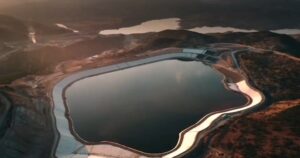
The web of protection that insulated Anagold stretched deep into Ankara. Environmental oversight was systematically hollowed out. Ministry of environment officials later admitted that Anagold monitored its own radar and slope sensors. Labor inspectors testified that their authority did not extend to chemical processing or heap stability. Energy ministry officials renewed the company’s license without reviewing geotechnical data.
At the top of this structure stood former environment minister Murat Kurum, who reportedly oversaw kickback and bribery schemes on behalf of President Erdogan. In 2021 Kurum personally approved the mine’s expansion permit. Opposition lawmakers attempted to summon him to testify before the parliamentary committee, but their motions were blocked by deputies from Erdogan’s ruling Justice and Development Party (AKP), which, together with its far-right nationalist allies, dominates the legislature.
The political shield extended beyond Turkey. In Canada and the US, SSR Mining continued to market itself as a model of “sustainable extraction.” Its annual reports cited “exemplary ESG compliance” while internal emails — revealed in the Colorado lawsuit — described “material stability concerns” and “limited monitoring reliability” at Çöpler.
The aftermath was devastating on both sides of the Atlantic.
SSR Mining’s stock plunged 53 percent on NASDAQ within 24 hours, erasing over $1 billion in market value. The company wrote off $114 million in losses and estimated cleanup costs exceeding $300 million. Dividends were suspended; Turkish operations were halted indefinitely.
In Turkey prosecutors detained eight company officials, including Cengiz Yalçın Demirci, SSR’s Turkey country manager. He was released six hours later. The Ministry of Environment revoked Anagold’s license, but the government stopped short of implicating its politically connected shareholder, Çalık Holding.
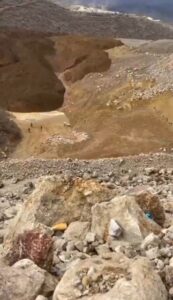
An expert panel commissioned by the government later confirmed what engineers had long said: The disaster resulted from “design errors, insufficient monitoring and failure to act upon visible warning signs.” But even as it named company managers as responsible, it spared ministry officials and political decision-makers from blame.
The Çöpler mine’s proximity to the Euphrates River magnified its ecological stakes. Scientists from Karadeniz Technical University reported that the heap’s debris had reached within 400 meters of an active fault line and less than a kilometer from the Karasu tributary, raising fears of cross-border contamination.
The government’s initial tests claimed “no contamination,” but independent researchers from Middle East Technical University found elevated levels of arsenic, cadmium and lead downstream. “The soil and groundwater are contaminated beyond reversible levels,” one geochemist said. “This is an environmental Chernobyl in slow motion.”
Despite these findings, environmental transparency remains nonexistent. Independent testing permits are restricted, and university researchers have been denied site access. “The government is the regulator and the accomplice,” said one environmental NGO representative. “They are managing the disaster like a state secret.”
The class-action lawsuit filed in Colorado federal court, Karam Akhras v. SSR Mining Inc. et al., accuses SSR of securities fraud under the US Securities Exchange Act of 1934. The complaint alleges that the company’s executives made false or misleading statements about Çöpler’s safety systems, materially inflating its stock price. When the mine collapsed, the truth surfaced and shareholders lost millions.
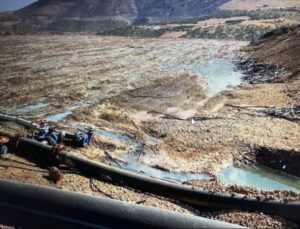
The plaintiffs argue that SSR not only failed to prevent a preventable collapse but also knowingly benefited from Turkey’s corrupted regulatory environment, exploiting political connections through Çalık Holding to minimize oversight and maximize output. “SSR operated in a jurisdiction where political loyalty replaced law,” the complaint reads. “It chose profit over safety because the system allowed it.”
If successful, the case could set a precedent for holding multinational mining firms accountable for operations conducted under authoritarian regimes where regulation is traded for allegiance.
The Turkish criminal case, launched within days of the accident by the Erzincan Chief Public Prosecutor’s Office, has been marred with alleged political interference from the start. The authorities detained several company executives, including Anagold Vice President for Operations Iain Ronald Guille, Project Manager Shaun Keady Swartz, Occupational Safety Manager Selçuk Çiftlik, Project Coordinator Ömer Ardıç and Senior Geotechnical Engineer Ali Rıza Kalender.
On March 13, 2024, prosecutors appointed a multidisciplinary expert panel consisting of academics from Middle East Technical University (ODTÜ), Istanbul Technical University (İTÜ) and Istanbul University–Cerrahpaşa. The panel visited the site on March 16 and delivered a 262-page report on May 23, 2024.
The report was damning. It found that the disaster was entirely preventable and directly linked to administrative and corporate negligence. It identified as “primarily at fault” the officials who had issued the October 7, 2021 positive EIA, signed under then–environment minister Kurum. It concluded that the mine’s expansion to Phase 4B — approved during Kurum’s time in office — was a key factor in destabilizing the leach heap.
The report also found that the heap exceeded safe engineering limits and was constructed on top of weak geological formations. Experts warned that “the probability of failure was known and ignored.”
After the first report put blame on ministry officials, the Erzincan Chief Public Prosecutor’s Office rejected it as “inconclusive” and ordered a new expert committee in October 2024. The replacement panel submitted its findings on November 22, 2024. This second report reversed much of the earlier analysis. It declared that the collapse “could not be linked to the EIA process” and that ministry officials were without fault.
The panel of experts convened by the prosecutor’s office after the mine disaster concluded that 13 people bore primary responsibility and that 26 others were secondarily at fault. Notably, then-environment minister Murat Kurum, who had personally approved the mine’s Environmental Impact Assessment in 2021, was also deemed primarily responsible. The prosecutor, however, later dismissed the expert report without offering any explanattion:
Relying on this version, prosecutors issued a decision of non-prosecution in December 2024 for all government officials, including those who signed the 2021 EIA.
The 69-page indictment prepared by the Erzincan Chief Public Prosecutor’s Office was finalized in late December 2024. It charged 43 individuals including five detained executives with “causing death and injury by negligence” and “negligently polluting the environment.” The accused included Anagold Country Manager Cengiz Yalçın Demirci, SSR Mining Vice President for Global Projects John Harmse and several foreign engineers.
The indictment cited 12 defendants as primarily at fault and 31 as secondarily, noting that “no element of inevitability existed” and that the collapse resulted from design flaws, management failures and inadequate warning systems. It also documented evidence from radar imagery that showed accelerating movement and visible color change in the heap’s upper layers two days before the disaster.
Three hearings have been held in the case so far, revealing shocking details such as the fact that radar monitoring systems had malfunctioned for two years, with internal emails showing that management deferred repairs due to “budget constraints.”
In the first hearing in the case, Anagold’s vice president for operations, Iain Ronald Guille, described the collapse as “unforeseeable and catastrophic,” claiming he had fulfilled all duties by reporting cracks via email to SSR Mining’s headquarters. “In my 42 years of mining experience, I have never seen such a large heap-leach structure anywhere in the world,” he told the court, denying personal responsibility for safety oversight. Guille’s lawyer argued that his client was a senior executive without operational liability.
Following Guille, Shaun Keady Schwartz, another detained Anagold executive, denyed any role in managing the heap-leach pad and claiming his detention was unjust.
On the second day of hearings on March 18, 2025, Ali Rıza Kalender, the mine’s former chief geotechnical engineer, said Anagold was trying to make him a “scapegoat,” stressing that heap-leach design and oversight were the responsibility of US firm GRE (with INR as a local partner). He said he lowered GRE’s radar alarm threshold from 500 mm to 50 mm, warned managers about overloading in Phase 4/4B due to delays in Phase 5 and urged production stoppages as radar readings jumped to 90–200 mm on the day of the disaster. According to Kalender, if the danger threshold on the radars had been set at 500 millimeters, the disaster would have been far greater. He added that radars were used beyond their seven-year lifespan and that more units were only procured after the collapse.
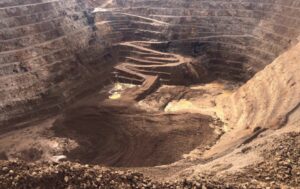
The third day of hearings on March 21 centered on the defense statements of engineers from INR Mühendislik, the Turkish subcontractor accused along with the US-based GRE of faulty design and oversight of the cyanide heap-leach pad.
Mine operator Anagold has sought to shift full blame onto GRE and INR, arguing that engineering errors and poor monitoring by these companies caused the heap to collapse. INR engineers, however, presented documentation showing that their role was limited to adapting GRE’s technical designs for Turkish regulatory submission and that they had no authority for supervision or on-site monitoring.
INR engineer Erdi Seyhan told the court that the piezometers — devices that measure groundwater pressure and water levels within the heap — had long been non-functional, making proper water management impossible. He said that while the water level should have been maintained at 1 meter, it had reached nearly 9.8 meters before the collapse. He also revealed that the clay content of the ore — meant to be capped at 15 percent — had reached 30 percent, drastically changing the physical stability of the heap while operations continued under the original, outdated design parameters.
Seyhan testified that cracks in the heap-leach pad had been visible for over 100 days before the disaster, even detectable in satellite imagery, and that the tragedy could have been prevented had these warnings been correctly interpreted.
Another INR engineer, Aykut Ayderman, corroborated that fractures appeared days in advance and criticized the mine’s leadership for incompetence, saying such signs “could only have been ignored by unqualified managers.” He cited inspection reports from the Tierra Group, an international auditing firm, which in early 2023 and again in December warned of serious risks including poor water management, unstable ore composition and ponding within the heap, noting that no water meters were even installed to measure recirculating cyanide solution.

INR co-owner Funda Ardıç testified that the Tierra Group’s December 2023 report explicitly stated there was “a very high risk,” assigning corrective tasks to the company’s management but that none of them were ever implemented.
The court also heard that engineer Berkay Mısır, previously working under chief geotechnical engineer Ali Rıza Kalender, had changed his statement between initial police questioning and later testimony to a prosecutor. Kalender’s lawyer, Hakan Sil, said Mısır’s first statement supported Kalender’s warnings to management but was later altered under pressure to implicate him. Notably, Mısır remains one of the few Anagold employees not dismissed after the disaster — fueling suspicion that his revised testimony serves the company’s defense narrative.
Despite these findings, the prosecution insists on charging the case under negligence, not probable intent, a distinction that drastically reduces potential sentences. The indictment charges 43 defendants — 12 with primary and 31 with secondary negligence — under Articles 85 and 182 of the Turkish Penal Code, causing death and injury by negligence and negligently polluting the environment. Legal experts argue that the evidence — foreseeable risk, ignored warnings and profit-driven inaction — meets the threshold for “probable intent to cause death.”
Adding insult to injury, reports surfaced that Anagold offered families up to 18 million Turkish lira in exchange for dropping their lawsuits, a proposal some relatives described as “blood money.” The company stated in a press release on May 8 that seven of the nine families of the victims had accepted the compensation package offered by Anagold, adding that all nine families are listed as plaintiffs in the case.
In response to mounting scrutiny, Anagold released a statement seeking to refute a number of allegations that had surfaced in court filings, public debate and media coverage:
The proceedings were marred by the judges’ rejection of most key requests made by the lawyers representing the victims’ families. For instance, motions for labor unions and civil society groups to join the case as co-plaintiffs were denied. Requests for access to Anagold’s internal computer data and correspondence were also rejected on the grounds that the company “is not a direct party to the case.” The court further refused to compel Cengiz Yalçın Demirci, Anagold’s Turkey country manager, to appear in person despite being listed as a primary suspect. Demirci, who has never attended any hearing, continued to have his defense presented solely through his attorney, effectively preventing cross-examination by the victims’ lawyers.
In the meantime Turkish authorities quietly allowed Anagold to resume operations at the mine under the guise of maintenance requirements. As of autumn 2025 Anagold continues to spend heavily on site “remediation,” reporting $250 million in expenses and planning to submit a new EIA application — even before the criminal case concludes.
In what appears to be a coordinated public relations campaign, government-aligned media outlets have in recent months published favorable reports promoting the resumption of mining operations, portraying the site as safer than before and emphasizing claims that local communities need the jobs.
More than a year after the disaster, the heaps of toxic waste still scar the hills of İliç. Six company employees face trial in Turkey, but no senior official, minister or Çalık executive has been charged. Cleanup continues under military supervision; the mine remains sealed off from journalists and NGOs.
In Ankara, nothing has changed. The AKP-led parliamentary inquiry concluded with no assignment of political responsibility. Its final report described the incident as a “geotechnical failure.” The ministers implicated remain in office. Çalık Holding continues to receive lucrative government contracts in energy and infrastructure.
What collapsed in İliç was not merely a heap of poisoned earth — it was the illusion of governance. The disaster exposed a state where political loyalty supersedes law, corporate greed defines policy and international complicity masks accountability.
As US courts now weigh SSR Mining’s liability, one truth remains buried in the toxic mud of Erzincan: In Turkey’s political economy, disaster is not an aberration, it is the inevitable outcome of a system designed to serve power, not people.
WHO WAS NEGLIGENT:
The expert report prepared on the February 13, 2024, cyanide heap-leach collapse at the Çöpler gold mine in Erzincan’s İliç district concluded that the disaster, which killed nine miners, was a foreseeable and preventable workplace accident caused by a combination of engineering flaws, managerial negligence and regulatory failure. Citing Article 13(a–b) of Turkey’s Social Security Law No. 5510, the expert panel formally classified the incident as a workplace accident rather than a natural disaster.
According to the report the collapse resulted from multiple layers of failure. The project management system had not been properly established or operated, and the expansion undertaken under Phase 4B was carried out without adequate engineering reassessment. The mine’s design and project documentation contained clear errors, while design criteria during operation were insufficiently monitored. During the construction of Phase 5, large quantities of explosives were used dangerously close to the heap-leach area without proper assessment of their potential impact. The early-warning systems were found to be inadequate, and once cracks began to appear, there was no effective mechanism in place to manage the unfolding emergency. The experts further concluded that the incident led to environmental pollution and that the stability analyses conducted during the design phase failed to meet the requirements of Turkish mining and environmental law, showing that essential data sets were never used and that mandatory obligations under those laws had been ignored.
The report identified 13 individuals as primarily responsible for the collapse. They included senior managers and engineers from SSR Mining, Anagold, GRE and INR Engineering who were directly involved in the mine’s design, expansion and operation. Those held primarily negligent were listed as John Harmse, vice president of Global Projects at SSR Mining; Cengiz Yalçın Demirci, country manager and board member of Anagold; Iain Ronald Guille, Anagold’s vice president for operations; Shaun Schwartz, director of sustainable investment projects at Anagold; Ali Rıza Kalender, senior geotechnical engineer at Anagold; Fuat Yılmaz, the company’s mining operations chief; Selçuk Çiftlik, its occupational health and safety director; Ömer Ardıç, project coordinator at INR Engineering; Kenan Özdemir, Anagold’s operations director; Luis Quirindongo, design engineer at GRE; Vinh Luu Le, also a design engineer at GRE; Kevin Gunesh, GRE’s control engineer; and Muhammed Kılıç, blasting engineer at Anagold.
Another 26 individuals were found secondarily negligent. They were mostly mid-level engineers, inspectors and quality assurance staff from SSR Mining, Anagold, WSP, INR, Ore Mineral and Çiftay and Hidro Dizayn who, according to the report, failed to ensure compliance with safety standards or to identify and act on early warning signs. Among them were SSR’s Vice President for Operations and Sustainability Bill McNevin; Anagold engineers Karabey Turan and İshak Aslan; WSP’s project managers and quality assurance engineers Patrick Valko, M. Yusuf Çelen, Alkın Yeşiltepe, Emrah Ergön, Ahmet Furkan Elçi, Hasan Aydın and Sertan Aydın; Anagold’s Chief Mining Geology Engineer İzzet Tekin and Assistant Geotechnical Engineer Berkay Mısır; Ore Mineral’s inspectors and engineers Ahmet Yurdaşan, Hayriye Öntürk Gürsoy, Talat Bülbül and Dindar Tosun; Çiftay’s project managers Ramazan Karakaplan and Ahmet Mumyakmaz along with site chief Yusuf Yazıcı; Anagold’s Maintenance Manager Abdülkadir Cansız and Chief Oxide Process Engineer Murat Bayraktar; INR’s design engineers Erdi Seyhan, Aykut Ayderman and Funda Ardıç; and Hidro Dizayn’s inspection staff Osman Bayrak and Bürgehan Akarsu.
In a striking addition, the expert panel also held that government officials who approved the mine’s Environmental Impact Assessment (EIA) for the Phase 4B expansion were primarily negligent. The EIA, approved on October 7, 2021, under registration number 6421 by the Ministry of Environment, Urbanization and Climate Change, then led by Minister Murat Kurum, was found to have been issued without adequate geological, environmental or cyanide management review. The panel stated that these officials failed to assess the risk of overloading in the heap-leach pad and ignored previous scientific warnings that such conditions could lead to collapse. Their decision, the experts concluded, was a direct administrative act that enabled the conditions resulting in the disaster.
The report concluded that the Çöpler mine collapse was the product of cumulative negligence spanning both the private and public sectors. Thirteen senior executives and engineers bore primary responsibility, 26 others contributed through secondary negligence, and the government officials who issued the 2021 EIA approval shared direct culpability. Together, these failures revealed a system where industrial oversight had been replaced by political and corporate complicity — turning a preventable engineering failure into one of Turkey’s worst industrial disasters.

